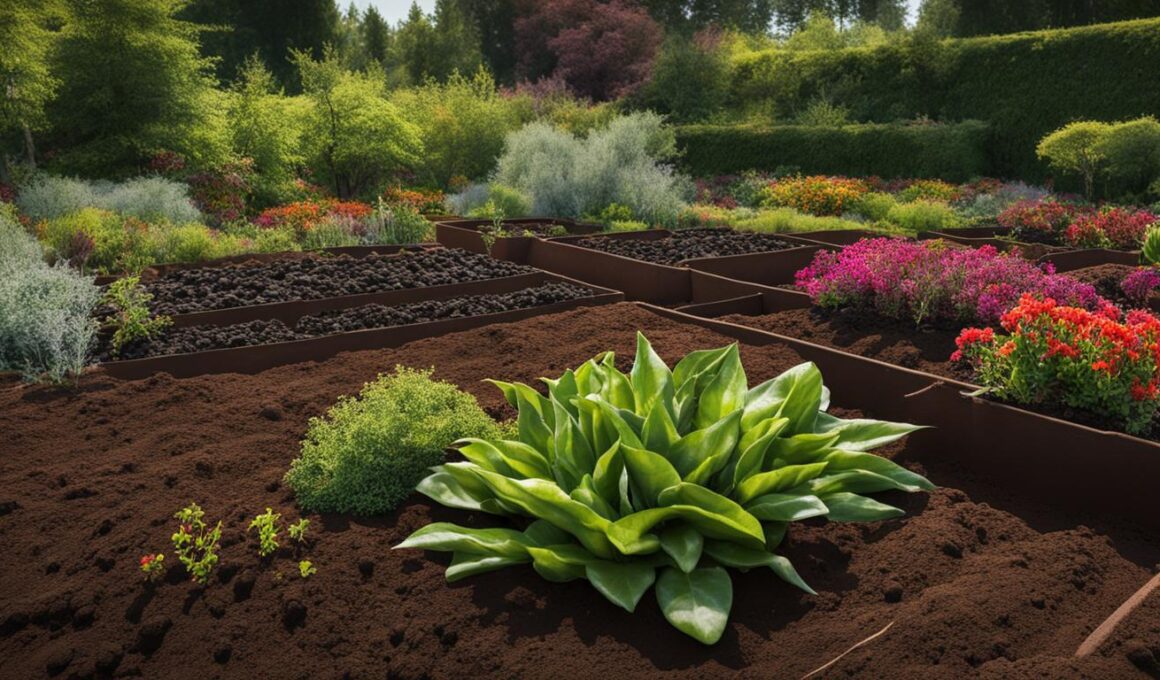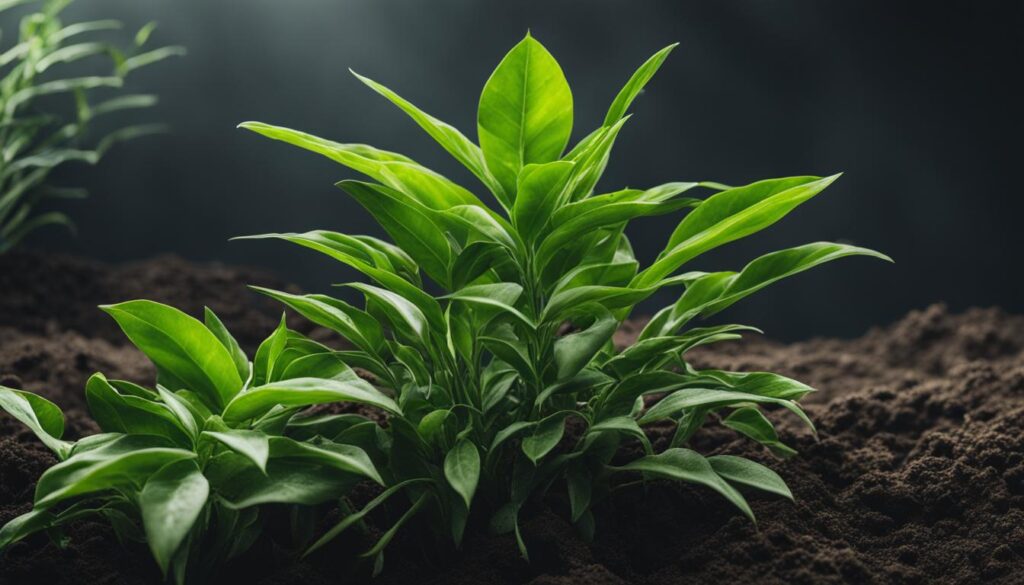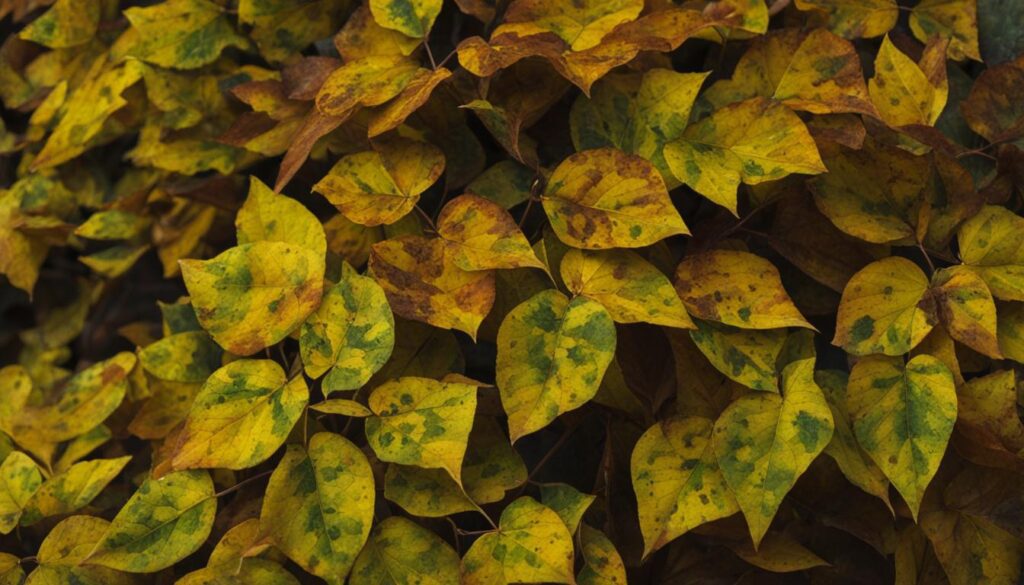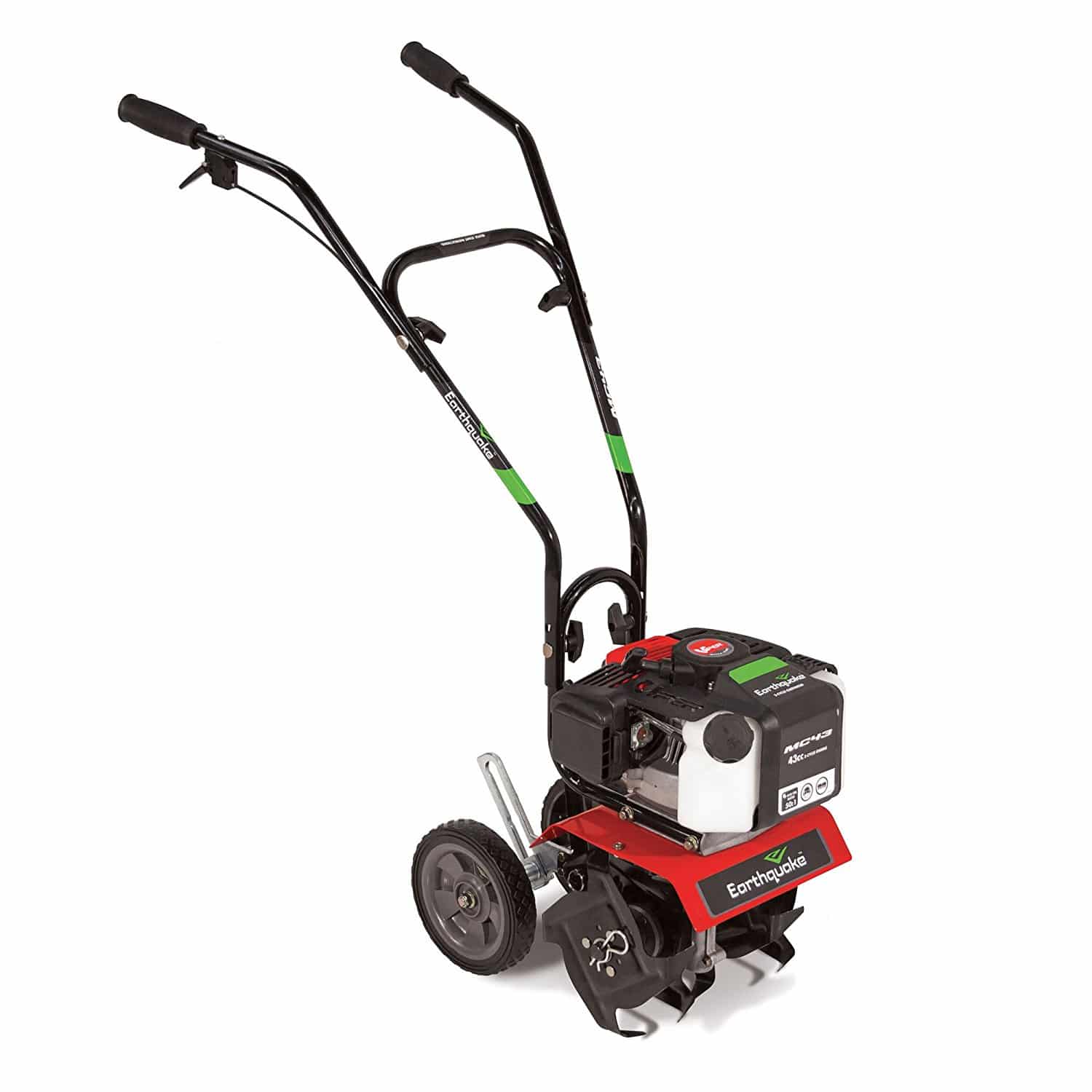Iron deficiency can hinder your plant growth and lead to nutrient imbalances in your garden soil. When there is an excessive amount of iron, it can cause yellowing of leaves, stunted growth, and decreased yields. To ensure your plants thrive, it’s essential to address this issue effectively.
In this article, we will explore practical tips and strategies to deal with too much iron in your garden soil. From understanding the role of iron in plant growth to recognizing the signs of iron excess, we will provide remedies and maintenance practices that promote a balanced and flourishing garden.
Post Summary
- Excessive iron in garden soil can hinder plant growth and lead to nutrient imbalances.
- Signs of iron excess include yellowing leaves, stunted growth, and reduced yields.
- Remedies for dealing with excessive iron include soil aeration, organic matter addition, pH adjustment, and supplements like chelates and ferrous sulfate.
- Maintaining iron balance in your garden requires lawn care, organic fertilizers, mulching, proper watering, and pH monitoring.
- Regular monitoring and adjustment of gardening techniques ensure a balanced and thriving ecosystem.
Understanding the Role of Iron in Plant Growth
Iron plays a crucial role in the growth and development of plants. It is involved in several vital processes that are essential for their overall health and metabolic functions. One of the primary roles of iron is its involvement in photosynthesis, the process by which plants convert sunlight and water into food. Iron is a key component of the enzymes that facilitate this process, allowing plants to produce energy and synthesize organic compounds.
In addition to photosynthesis, iron is also integral to chlorophyll synthesis. Chlorophyll is the pigment responsible for capturing light energy, and without sufficient iron, plants cannot produce enough chlorophyll. As a result, the leaves may turn yellow, and the overall growth and productivity of the plant can be significantly affected.
Furthermore, iron is involved in nutrient transport within the plant. It helps facilitate the movement of essential nutrients from the roots to other parts of the plant, ensuring proper distribution and utilization. Iron also plays a crucial role in plant metabolism, aiding in the production of proteins, nucleic acids, and enzymes, which are essential for various cellular processes.
Importance of Iron in Plant Growth
| Iron Functions | Role in Plant Growth |
|---|---|
| Photosynthesis | Conversion of sunlight and water into food |
| Chlorophyll Synthesis | Pigment responsible for capturing light energy |
| Nutrient Transport | Facilitates movement of essential nutrients within the plant |
| Plant Metabolism | Aids in the production of proteins, nucleic acids, and enzymes |
“Iron is like the lifeblood of plants. It not only drives essential processes like photosynthesis and chlorophyll synthesis but also ensures the efficient transport of nutrients throughout the plant. Without an adequate supply of iron, plants may suffer from stunted growth, reduced yields, and nutrient deficiencies.”
Understanding the importance of iron in plant growth is key to addressing any issues related to iron deficiency or excess in the soil. By maintaining the right balance of iron, you can promote healthy plant growth, enhance nutrient uptake, and ensure the overall well-being of your garden.
Signs and Symptoms of Iron Excess in Soil and Plants
Excessive iron in the soil can have detrimental effects on your plants, leading to a range of visible signs and symptoms. By being able to recognize these indicators, you can diagnose and address the issue effectively, ensuring the health and productivity of your garden.
One of the most common signs of iron excess is yellowing leaves. The high concentration of iron in the soil can disrupt the uptake of other essential nutrients, leading to nutrient imbalances and resulting in the yellowing of plant foliage. Additionally, stunted growth is another prevalent symptom of iron excess. When plants are unable to properly absorb needed nutrients due to the abundance of iron, their growth is hindered, and they may fail to reach their full potential.
In addition to yellowing leaves and stunted growth, excessive iron in the soil can also lead to reduced yields. The imbalance caused by high levels of iron can disrupt the plant’s internal processes, affecting its ability to produce fruits or flowers. This can be especially problematic for gardeners who rely on their plants for a bountiful harvest.
Signs and Symptoms of Iron Excess in Soil and Plants
To summarize, here are the key signs and symptoms of iron excess in soil and plants:
- Yellowing leaves
- Stunted growth
- Reduced yields
By paying close attention to these indicators, you can quickly identify if your garden soil has excessive iron and take the necessary steps to address the issue, ensuring optimal plant health and productivity.
Remedies for Dealing with Too Much Iron in Garden Soil
If you’re facing the challenge of excessive iron in your garden soil, there are several effective remedies that can help restore balance and promote optimal plant growth. These remedies address iron deficiency and provide essential nutrients to support your garden’s health.
Aeration and Organic Matter Addition
One remedy for dealing with too much iron in garden soil is proper aeration. By loosening compacted soil, you improve oxygen circulation and reduce iron availability. This can be achieved by using a garden fork or aerator to gently loosen the soil and enhance root development.
Additionally, adding organic matter is beneficial for promoting nutrient balance and improving soil fertility. Incorporate compost or well-rotted manure into the soil to enhance its structure and promote beneficial microbial activity. This helps break down excess iron and enhances nutrient absorption by plants.
pH Adjustment and Chelates
Adjusting the pH of the soil can also aid in managing excessive iron levels. Iron availability decreases at higher pH levels, so if your soil has a high pH, you can lower it by adding elemental sulfur or aluminum sulfate. Conversely, if the pH is low, you can increase it by adding lime.
In some cases, using chelates can be an effective remedy. Chelates are compounds that bind to excessive iron, making it more available for plant uptake. They can be applied directly to the soil or used as foliar sprays, depending on the severity of the iron deficiency.
Ferrous Sulfate as a Supplement
Ferrous sulfate is another valuable remedy for dealing with iron deficiency in garden soil. It is a water-soluble form of iron that can be applied directly to the soil or used as a foliar spray. This supplement provides an immediate source of iron and helps alleviate symptoms of iron deficiency in plants.
By implementing these remedies, you can effectively address excessive iron levels in your garden soil and ensure optimal nutrient balance for healthy plant growth. Remember to monitor your soil’s pH levels regularly and adjust your gardening practices accordingly to maintain a flourishing garden.
| Remedy | Description |
|---|---|
| Aeration and Organic Matter Addition | Loosens compacted soil, improves oxygen circulation, and promotes nutrient balance by adding organic matter. |
| pH Adjustment | Alters soil pH to decrease iron availability in high-pH soil and increase availability in low-pH soil. |
| Chelates | Compounds that bind to excessive iron, making it more available for plant uptake. |
| Ferrous Sulfate | A water-soluble iron supplement that can be applied directly to the soil or used as a foliar spray. |
Practical Tips for Maintaining Iron Balance in Your Garden
To maintain a balanced iron level in your garden, there are several practical tips you can follow. Firstly, when it comes to lawn care, consider using organic fertilizers that contain a balanced mix of nutrients, including iron. This will ensure that your plants receive the necessary amount of iron without the risk of excessive accumulation. Look for fertilizers labeled as “iron-rich” or “balanced nutrients” to meet the specific needs of your garden.
Mulching is another effective technique to maintain iron balance in your garden. By applying a layer of organic matter, such as compost or straw, around your plants, you provide them with a protective barrier that helps retain moisture and regulate nutrient availability. Organic mulch also contributes to soil fertility and encourages beneficial microbial activity, further supporting the overall health of your garden.
Proper watering practices play a crucial role in iron balance. It is important to water your plants deeply and infrequently rather than shallowly and frequently. Deep watering promotes root growth and allows water to penetrate deeper into the soil, where it can reach the plant’s root zone and deliver essential nutrients, including iron. Monitor your garden’s moisture levels regularly to ensure that your plants receive adequate hydration without the risk of waterlogging or drought stress.
Monitoring the pH levels of your soil is vital to maintain optimal iron absorption by plants. Iron availability can be influenced by soil pH, and different plant species have specific pH requirements for optimal growth. Test your soil regularly using a pH testing kit and adjust the pH as needed. Adding organic matter or sulfur can lower the pH for plants that prefer acidic conditions, while adding lime can raise the pH for plants that thrive in more alkaline environments.
Recommended pH Levels for Common Garden Plants
| Plant | Optimal pH Range |
|---|---|
| Tomatoes | 6.0-7.0 |
| Roses | 6.0-6.5 |
| Blueberries | 4.5-5.5 |
| Hydrangeas | 5.2-5.5 |
| Spinach | 6.0-7.0 |
By following these practical tips for maintaining iron balance in your garden, you can ensure that your plants thrive and achieve optimal growth. Remember to utilize organic fertilizers, implement mulching techniques, practice proper watering, and monitor your soil’s pH levels regularly. With these efforts, you will create a balanced and flourishing garden where iron deficiency or excess is kept in check, contributing to the overall health and vitality of your plants.
Conclusion
Managing excessive iron in your garden soil is crucial for maintaining plant health and achieving a thriving garden. By understanding the role of iron in plant growth and recognizing the signs of iron excess, you can take proactive steps to address this issue.
To effectively manage excessive iron, implement the appropriate remedies such as soil aeration, adding organic matter, and adjusting pH levels. These actions will promote nutrient balance and enhance the overall health of your plants.
Furthermore, maintaining a balanced iron level requires consistent monitoring of your soil and plants. Regularly check for any signs of imbalance and adjust your gardening techniques accordingly. By doing so, you can create an optimal environment for your plants to flourish.
Remember, an excessive iron level can disrupt nutrient uptake and hinder plant growth. By taking control of the situation and implementing the necessary measures, you can ensure a thriving garden with a balanced nutrient composition and promote the overall well-being of your plants.
FAQ
What are the common symptoms of iron excess in plants?
Common symptoms of iron excess include yellowing of leaves, stunted growth, and reduced yields.
How does excessive iron in the soil affect plants?
Excessive iron can disrupt nutrient uptake and imbalance the plant’s internal processes.
What are some remedies for dealing with excessive iron in garden soil?
Remedies include soil aeration, adding organic matter, adjusting soil pH, and using chelates or ferrous sulfate as supplements.
How can I maintain a balanced iron level in my garden?
Practical tips include using organic fertilizers, mulching, proper watering practices, and regularly monitoring soil pH levels.
What is the role of iron in plant growth?
Iron is involved in photosynthesis, chlorophyll synthesis, nutrient transport, plant metabolism, and the production of proteins, nucleic acids, and enzymes.
How can I recognize the signs and symptoms of iron excess in my plants?
Signs include yellowing leaves, stunted growth, and reduced yields.
How can I address iron deficiency in my plants?
Remedies include soil aeration, adding organic matter, adjusting soil pH, and using chelates or ferrous sulfate as supplements.
What are some practical tips for maintaining iron balance in my garden?
Tips include using organic fertilizers, mulching, proper watering practices, and regularly monitoring soil pH levels.
What are the best ways to address and fix iron imbalances in soil for both gardens and lawns?
When dealing with iron imbalances in soil for gardens and lawns, it’s important to address the hazards of too much iron. One effective way to fix these imbalances is by using chelated iron fertilizers, which can help ensure that plants receive the right amount of iron without causing any issues.











